From the smallest frog to the heaviest land tortoise and the only flightless bird of the Indian Ocean, Seychelles nurtures an amazing array of endemic species within surrounds of exceptional natural beauty.
Feeding the giant tortoises that roam freely in La Digue
The Seychelles Islands are considered a living museum of natural history and a sanctuary for some of the rarest species of flora & fauna on earth. Almost 50% of the island’s landmass is set aside as national parks and reserves, including two U.N.E.S.C.O World Heritage Sites: the coral atoll of Aldabra, and Praslin’s “Vallée de Mai”, once believed to be the original site of the Garden of Eden and the home of the famous ‘Coco De Mer’, the largest seed in the world.
The female Coco de Mer palms with their large nuts and fan-like leaves
The Coco de Mer, known scientifically as ‘Lodoicea Maldivica’, was formally called the Maldive coconut, as its was first discovered in the Maldives in the 18th century when the Seychelles Islands were still undiscovered and uninhabited.
The Coco de Mer seed also known as the ‘Love Nut’ due to its suggestive shape
The nuts that fell from the Coco de Mer trees often ended up in the sea and would be carried away eastwards by the prevailing sea currents towards the beaches of the Maldives where they were gathered and valued as an important trade and medicinal item. It was believed that these magical nuts grew on a mythical tree at the bottom of the ocean – hence the name ‘Coco de Mer’ (coconut of the sea). It wasn’t until 1768 when the true source of the nut was discovered by French explorer Marc-Joseph Marion du Fresne on the magical Seychelles Islands of Praslin and Curieuse.
The ‘Coco de Mer’ palm is endemic to the Seychelles and is the only dioecious species of palm, meaning that it has male and female flowers located on different plants. It is only the female flowers that produce the large ‘Coco de Mer’ nut.
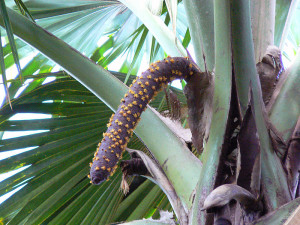
The flowering male Coco de Mer palm
Amazingly the ‘Coco de Mer’ palm holds three botanical records: the largest fruit so far recorded weighed 42 kg, the mature seeds weighing up to 17.6 kg are the world’s heaviest, and the female flowers are the largest of any palm – they truly are a sight to behold.
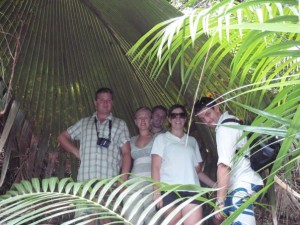
The Le Nautique gang standing tall under a huge Coco de Mer palm leaf
Today the best place to view the Coco de Mer in its natural habitat is at the “Vallee de Mai” U.N.E.S.C.O World Heritage Site in Praslin. Here you can walk various trails through the lush rainforest and past majestic waterfalls to view these huge trees and nuts for yourself – it is a magical experience for sure (not to forget there is also the chance to take a cheeky selfie with the famous ‘Love Nut’).
Will showing off the Coco de Mer (above) … and Stu looking like a naughty school boy (below).
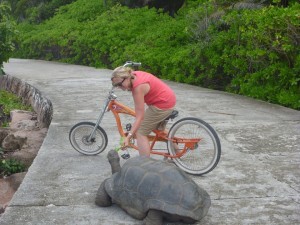
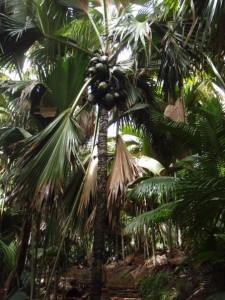
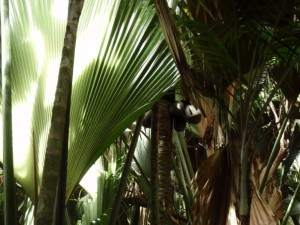
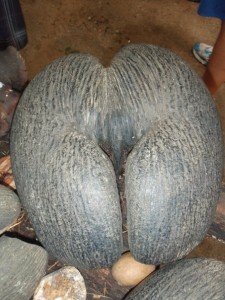
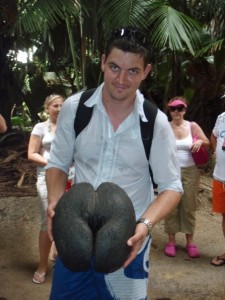
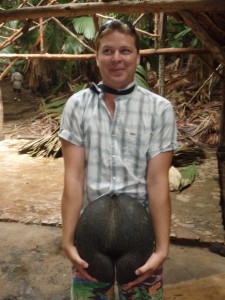
2 comments
Pingback: Gentle Giants: The Aldabra Giant Tortoise - Le-Nautique
Pingback: Day Tripping: Moking around Praslin - Le-Nautique